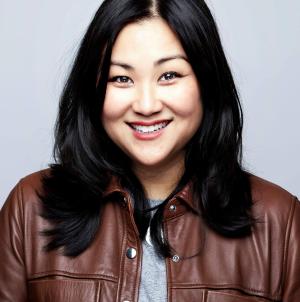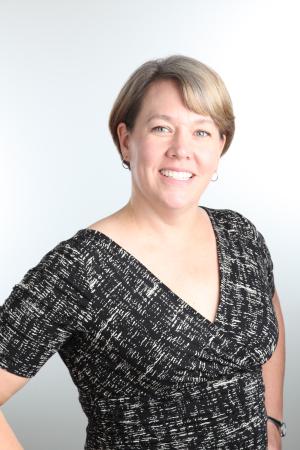Resources

During the past year and a half of the pandemic, the uprisings for racial justice, the continued fight for LGBTQIATS justice, the struggle for the rights of immigrants, and the global impact of climate change, I discovered an urgency in myself to create and to grow things as a way to resist and refuse the death dealing all around us. The realization of so many lives lost, generations cut off, and futures extinguished weighed heavier each day. As a coping mechanism, I feverishly planted things in my garden, from herbs to vegetables, and grew green things in my home. I willed each and every plant to thrive and flourish, even as I felt rage and, at times, despair about the state of the world. I wondered if others felt the same. If colleagues and students felt weary, depleted by the constant weight of white supremacy pressing down on every inch of our lives. I started asking myself if what I was teaching even mattered anymore. Did what I was assigning students to read and write speak back to the now? Did the topics we were discussing speak truth and do the work of witnessing the rage and anguish of the past and present? Did my lectures also speak into the creation and necessary intentionality of embodied joy as an act of refusing oppression in our lives? Did the classes I designed speak into the flourishing futures we were trying to co-create? Here’s the pivot. Once our institution was entirely online and I realized that as educators, we had collectively reached a level of exhaustion and depletion that would continue into the future, I craved bringing the practice of creation and spirituality back into the classroom in a tangible way. I wanted to bring back the spiritual practice that art had been in my life. In sum, not only the act of creating a piece of art, but the process that undergirds that creation. The work and discipline of noticing the big and small things in daily life and in the world as a response to so much death—death meted out by white supremacy, anti-Black racism, anti-Asian violence, heteronormativity, bigotry, and ableism, to name just some of what we were are living through. I was also sick of words. Words can be full, but they can also be rather empty. People asking, “Hi, how are you?” without actually wanting to know. Sometimes there are things you feel, things you know, things that are ancestrally grounded in you that are unspeakable because they are so real and so incredibly meaningful. Sorrows and joys too deep to speak about in any coherent or fulsome way that an outsider could understand. There are things we experience that can’t and won’t be spoken about on demand. The days that we were living in felt heavy in this way: there weren’t enough words to carry the weight of it all. I began to wonder if there was a different way to teach and participate in the expression of community and lived experiences without centering words, to instead allow the unspeakable things within to guide us in a semester-long online class. I invited Rev. Darci Jaret, a local artist and theologian in Atlanta, to teach with me and we started working on creating our dream classroom. A space where students might use visual art to think theologically about art as a spiritual practice and a necessity for doing ministry and pastoral care in today’s world. As part of planning for this course, now dubbed, Spirituality and the Arts, we decided there would be no graded written work and instead we would focus our time on accountability through shared process and artwork. Students would create six pieces of visual art which moved from their personal journey to their theological understanding of the Divine presence, to pieces inspired by artists like Gabriel Garcia Roman’s Queer Icon series and Alvin Ailey’s Revelations. We would paint, sketch, and sculpt. The pieces were connected to one another, spiraling out from self, back to community and the world, and back to the self. The final project would be a gift and blessing for another student in the class, a sending back into the world equipped to mend through a deeper appreciation of how the practice of making and praying through making changes our thinking, our theologies, and how we embody ourselves in the world. A major shift we made for this class was to let go of weekly assignments. We would take space and time for each piece of art. Instead of having pieces due each week, we gave students two full weeks to complete each piece. They were asked to manage the time as they saw fit but to remain accountable to sharing their process with the group. Each week, students were given relevant material to read and watch, ranging from scholarship on spirituality and pastoral care through art to watching documentaries about the decolonization of societies and neighborhoods through art making. We thought of the scholarly material for each week as a place for grounding and growing inspiration, raising significant questions, and challenging bias. Art and creativity do not occur or appear on demand but like any living thing, are nurtured into being through acknowledgement, trying this or that, and deep contemplation of what we encounter in the world, in ourselves, and in others. We encouraged our artists to think about and wrestle with the course material and provide video updates on their process at the end of the first week of each project. We asked them to cheer one another on as some projects were easier or more difficult for people depending on what was being worked out through each piece. We often repeated that is ok to just read and think, and to start and start over. The only thing to submit for a grade was the piece of art at the end of each two-week period. Everything that occurred up to that point was part of the practice of learning to be in community through accountable process.

When we first move into online classroom spaces, we often miss the dynamic energy of gathered bodies in a familiar location. We lose the immediate gratification of watching in real time as new knowledge “clicks” for students in discussions and class activities. Online classrooms may initially feel sterile, artificial, and indistinguishable from one another in our learning management system. With time and experience in teaching in online classrooms, we may begin to reconsider how a traditional residential classroom is also an artificial space. Residential education occurs on the educational institution’s “turf,” asking students to put their relational connections, participation in the economy, and other vocational expressions on hold to enter into these four walls to be formed and informed. Traditional schooling is an attempt to engage life wisdom from across generations and cultures in a simulated environment that speeds knowledge acquisition and re-organizes it more efficiently from how we might naturally encounter it in life. There is nothing “natural” about a classroom with 12-200 students in it all trying to learn the same things at the same time, regardless of their existing experience or knowledge. What feels “traditional” about this education is actually a factory model of education largely adopted during the industrial revolution for the sake of increasing access to and efficiency of education for the masses. To be certain, online classrooms have many of the same constructed elements. However, they are also more porous than synchronous residential learning experiences. You may experience this in the plethora of Zoom meetings that are happening right now in the midst of staying-at-home as a part of Covid 19 mitigation. Suddenly, you see your students in their home contexts, sometimes with roommates, children, spouses, or pets wandering into the picture. The students’ home contexts become a part of the teaching and learning milieu in more pressing ways when they stay embedded in them. While they are still engaging with a community seeking knowledge, they are also embedded in other relationships and contexts where that knowledge can be tested and integrated on a daily basis. Another of the unique features of online spaces is the capacity for immediate linkage to communities and resources far beyond those of the “walled-in” residential classroom. Opportunities to have students video-conference with scholars or practitioners around the world, curate their own examples or applications of course content drawn from internet resources and their local context, or interact with external media or images related to the course are easy to arrange in online classrooms. This allows course content and the contexts in which knowledge is situated to expand in ways sometimes even beyond faculty expectations and expertise. By asking students to take the insights they are gaining into other settings or to make connections with external resources, faculty may find ways to make online interactions more analytical, more relevant to students’ final vocational destinations, and more engaging for both students and faculty. Additionally, porosity means that students can share learnings from the course through online forums from Twitter feeds to YouTube videos by linking to these in the online classroom. This practice serves as a way to test out ideas in other publics and to help students understand that ultimately this knowledge is not for regurgitation in a classroom setting for their instructor to judge but rather for integration and application in other settings. The longer I have taught online, the more I have become reluctant to serve as the primary audience for student written work. While I always read student work and provide the best feedback my own expertise and experiences with the material can provide, I find that they are better and more committed scholars when they know that what they are creating will find its way into a group who can benefit from what they are creating, whether their class colleagues or some other part of their community. Student papers are remarkably stronger when they know they will share them with their classroom colleagues or other external audiences in comparison to the ones that they will just dash off at the last minute to submit to me in order to complete an assignment. This strategy improves student formation by positioning them more regularly as persons whose knowledge impacts not only their experience but serves other communities as well. The space for collaborative exchange between students is so much easier to engage in porous online settings where students can share resources and insights easily through links and public postings. There are times when the porosity of online classrooms can be concerning. It is helpful to protect some spaces where mistakes can be made and opinions shared that are within relationships of mutual accountability rather than in the general public. And in theological education where I teach, students are often accountable to ordination boards and hiring committees who may not yet need to witness their growth and development as they encounter new ideas. Some of those boundaries can be maintained in online classrooms to the extent that they can in the public space of a residential classroom. But the possibility of regularly opening up the classroom to the world outside the four walls is an engaging gift of online education.